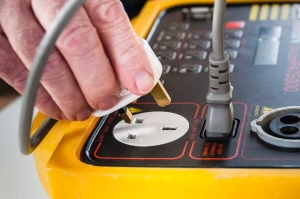Mastering Communication in Relationships: Key Strategies for Lasting Connection
Understanding the Importance of Communication in Relationships
Effective communication in relationships forms the foundation of every healthy partnership. It is essential for fostering mutual understanding, trust, and connection between partners. In today’s fast-paced world, where distractions abound, the significance of meaningful communication cannot be overstated. This article will explore the various aspects of communication that contribute to relationship success, the barriers that often impede effective interactions, and the foundational role of open dialogue in building trust.
The Role of Communication in Relationship Success
Communication serves as the lifeblood of a relationship, influencing how partners connect, resolve conflicts, and share their feelings. It encompasses everything from verbal exchanges to nonverbal cues, playing a pivotal role in establishing intimacy and empathy. When individuals communicate effectively, they are able to articulate their needs and desires, leading to greater relationship satisfaction.
Research has consistently shown that couples who engage in open communication tend to report higher levels of happiness and a deeper emotional connection. They are more equipped to tackle challenges together and navigate the ups and downs of relationship life. According to renowned relationship researchers, a clear line of communication not only helps in resolving conflicts but also promotes feelings of safety and security within the partnership.
Common Barriers to Effective Communication
Despite its importance, many couples struggle with communication due to various barriers. Here are some common challenges:
- Assumptions: Assuming that your partner knows what you feel or think can lead to misunderstandings. Open dialogue is crucial for ensuring both partners are on the same page.
- Fear of Vulnerability: Many individuals fear showing weakness or vulnerability, which can hinder authentic conversations about feelings and concerns.
- Distractions: In a digital world, distractions such as smartphones and social media can pull attention away from meaningful discussions.
Recognizing these barriers is essential for developing strategies to overcome them. Couples must actively work on their communication skills to create a more harmonious relationship environment.
Building Trust through Open Communication
Trust is a cornerstone of any healthy relationship, and open communication is key to cultivating it. When partners share their thoughts, feelings, and concerns transparently, they foster an environment of trust. This transparency encourages partners to be vulnerable with each other, solidifying their emotional bond. Consistent communication helps to dispel misconceptions and ensures that both individuals feel heard and valued.
Moreover, making a habit of checking in on each other’s emotional state can significantly enhance trust. Simple questions like “How are you feeling today?” or “What’s on your mind?” can open the door for deeper conversations about emotional well-being and strengthen overall relationship dynamics.
Key Techniques for Improving Communication in Relationships
Active Listening Skills for Better Understanding
Active listening is a fundamental communication skill that goes beyond simply hearing words. It involves being fully engaged in the conversation, showing genuine interest, and responding appropriately. To practice active listening, couples can employ techniques such as:
- Maintaining Eye Contact: This conveys attentiveness and shows your partner that you value what they are saying.
- Reflecting and Paraphrasing: Repeating back what your partner said in your own words can demonstrate understanding and confirm clarity.
- Asking Clarifying Questions: This helps to delve deeper into the conversation and encourages further exploration of feelings and thoughts.
By honing active listening skills, partners can eliminate miscommunications and strengthen their emotional connection.
Utilizing Nonverbal Communication Cues
Nonverbal communication—encompassing gestures, expressions, and body language—plays a crucial role in relationship dynamics. Often, what is left unsaid can speak volumes. To improve communication, partners should be aware of their own nonverbal signals and those of their partner:
- Facial Expressions: Expressive faces can convey emotions even before words are spoken. Partners should be mindful of their expressions as these can influence how messages are received.
- Posture and Positioning: Open body language, such as facing each other directly and avoiding crossed arms, indicates openness and receptiveness.
- Gestures: Simple gestures like nodding can affirm engagement and understanding during conversations.
Being attuned to these nonverbal cues can enhance understanding and prevent misinterpretations within the dialogue.
Strategies for Open and Honest Dialogue
Creating an atmosphere where both partners can express their thoughts honestly is essential for a thriving relationship. Here are several strategies that couples can implement:
- Setting Aside Quality Time: Designate time for undistracted conversations, ideally in a comfortable setting that fosters openness.
- Practicing “I” Statements: Use “I feel” instead of “You make me feel,” which can come across as accusatory. This shift strategizes ownership of emotions and reduces defensiveness.
- Avoiding Blame: Focus on discussing issues at hand rather than critiquing the partner’s character. Healthy discussions should revolve around solutions, not blame.
Implementing these strategies can cultivate a culture of openness that allows both partners to share their thoughts without fear of reprisal.
Conflict Resolution: Navigating Difficult Conversations
Recognizing the Signs of Unhealthy Communication
It’s crucial for couples to be aware of the signs that their communication has become unhealthy. Here are some indicators:
- Withdrawal: One partner may emotionally or physically disengage during discussions.
- Defensiveness: Quick reactions to perceived attacks can shut down communication and create additional tension.
- Contempt: Sneers, ridicule, and sarcasm signal deep-seated issues that need addressing outside the argument.
Recognizing these signs can help couples take proactive steps towards fostering healthier communication habits.
Effective Conflict Resolution Techniques
To navigate difficult conversations successfully, couples should consider employing the following techniques:
- Stay Focused on the Issue: Addressing one topic at a time can prevent conversations from spiraling out of control.
- Time-Outs: If emotions run high, taking a break can allow both partners to cool off and gather their thoughts before re-engaging.
- Use of Humor: Lightening the mood (when appropriate) can diffuse tension and create common ground.
Using these techniques can ease the stress of conflict and refocus conversations on resolution rather than resentment.
When to Seek Professional Help
Sometimes relationships reach a point where couples may feel they need external support. Signs that it may be time to seek help from a professional include:
- Chronic Patterns of Conflict: When fighting about the same issues repeatedly without resolution.
- Emotional Distance: Feeling disconnected or uninspired within the relationship.
- Unresolved Trauma: Previous wounds that impact current interactions may benefit from the guidance of a qualified therapist.
Therapy can provide a safe space for expression and help couples learn tools to strengthen their communication skills.
Enhancing Emotional Connection through Effective Communication
Expressing Emotions Clearly and Kindly
Emotional expression is a vital part of building intimacy. Sharing feelings helps partners understand each other on a deeper level. However, how emotions are expressed matters. Couples can encourage a more profound emotional connection by doing the following:
- Be Specific: Provide concrete examples when discussing feelings. Instead of saying “I’m unhappy,” explain what specifically is causing distress.
- Use Kind Words: Framing discussions around feelings in a compassionate way encourages openness. For instance, saying “I feel neglected” rather than “You never pay attention to me” can foster a more cooperative dialogue.
- Practice Vulnerability: Sharing fears or insecurities can lead to a more profound connection when partners show empathy and understanding.
Emotionally aware communication can create a secure attachment and nurtures a loving partnership.
The Influence of Empathy on Communication
Empathy is the glue that holds relationships together. It allows partners to put themselves in each other’s shoes and understand feelings from the other’s perspective. To nurture empathy within the relationship, couples can:
- Practice Reflection: When your partner speaks, take a moment to reflect on their feelings and accurately convey their emotional state back to them.
- Acknowledge Feelings: Validate your partner’s emotions even if you disagree. Expressing that you understand their feelings goes a long way in strengthening emotional bonds.
- Engage in Active Conversations About Needs: Setting dedicated time for talking about each partner’s needs ensures that both feel seen and appreciated.
Empathy-rich conversations create a nurturing environment for love and connection.
Creating Safe Spaces for Vulnerability
The ability to express oneself without fear of judgment is crucial for emotional intimacy. Couples can create safe spaces for vulnerability by:
- Establishing Non-Judgmental Ground Rules: Agree to listen without criticizing each other. This encourages open sharing of emotions.
- Respecting Timing: Both partners should choose when they feel ready to talk about their feelings without rush or pressure.
- Encouraging Exploration: Encourage each other to dig deeper into feelings instead of brushing them aside or minimizing them.
By fostering these safe spaces, partners can explore their emotions together, greatly enhancing their relationship’s richness and depth.
Maintaining Long-Term Communication Practices in Relationships
Regular Check-Ins and Their Importance
Life can often become busy, making it easy for partners to lose touch with one another’s feelings and needs. Regular relationship check-ins can help keep communication channels open. Here’s how:
- Schedule Regular Times: Set aside time each week or month to discuss how things are going. Regular check-ins can prevent issues from building up.
- Encourage Each Other to Speak Freely: Let each other know that these conversations are safe and free of judgment.
- Discuss Future Goals: Use check-ins to not only address current feelings but also discuss and set future relationship goals.
Regular communication not only enhances understanding but also strengthens the emotional foundation of the relationship.
Tools for Ongoing Communication Enhancement
With the rise of technology, couples now have various tools available to enhance communication. Here are some effective options:
- Apps and Journals: Use relationship apps that encourage couples to write thoughts down, share prompts, or keep a journal of experiences together.
- Shared Calendars: Keep track of important events and quality time to ensure partners stay connected even during busy periods.
- Keep a Group Chat: Establish a group chat that focuses on sharing positive experiences, love notes, and daily updates without distractions.
Leveraging technology meaningfully can build stronger connections and facilitate ongoing communication.
Leveraging Technology for Improved Connection
In addition to traditional conversations, technology can play an influential role in enabling couples to connect better. Suggestions include:
- Virtual Dates: For long-distance couples, setting up regular video calls for “dinner dates” can maintain intimacy.
- Simpler Texting Strategies: Text each other simple reminders of affection throughout the day to keep the romantic spark alive.
- Online Workshops: Participate in webinars or workshops focused on relationship skills together to enhance understanding and communication.
Using technology as a communication tool can help maintain closeness even when physical distance may keep partners apart.













Post Comment